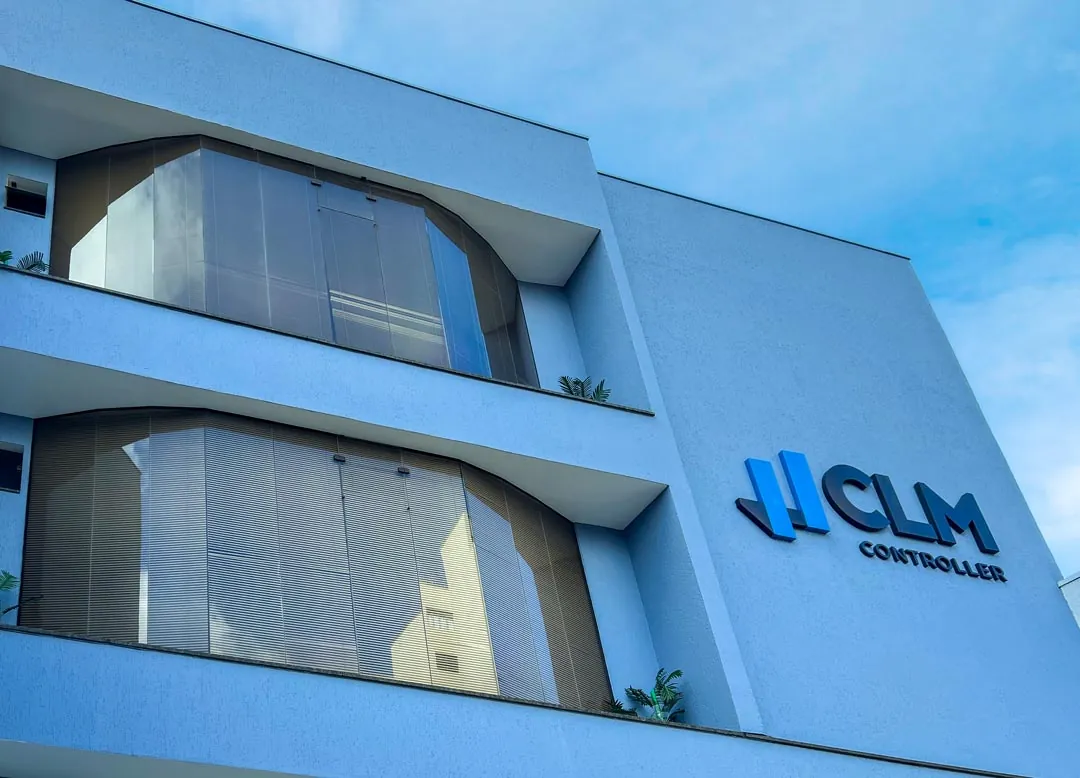In this direct and enlightening chat, Rodrigo Ribeiro e Marcos Ribeirodirectors of CLM Controller, explain in simple terms when the Real Profit can be the most advantageous tax regime - and when it can become a headache.
Knowing when to opt for Real Profit is a strategic decision that can generate significant tax savings and provide more security for the growth of your business.
Many entrepreneurs and financial directors of companies with annual turnover of less than R$ 78 million, and which are therefore not obliged by law to adopt this regime, need to assess whether the time has come to migrate voluntarily.
This choice requires careful analysis: Real Profit can reduce the tax burden in various scenarios, but it also requires greater accounting rigor and financial control.
In recent years, especially with the changes introduced by the 2025 Tax Reform, the need for a smarter tax planning has gained momentum.
The new system of consumption taxes (IBS and CBS) and the revision of PIS and COFINS credits made the debate about Real Profit is worth it even more relevant.
Those who understand the particularities of the system and know how to identify the right time to change are ahead of the competition and avoid surprises in the cash flow.
What is Real Profit
O Real Profit is a tax regime in which the main federal taxes, Corporate Income Tax (IRPJ) e Social Contribution on Net Profit (CSLL) are calculated on the basis of accounting net profitadjusted by the additions and exclusions provided for in tax legislation.
In other words, the tax is calculated on the profit actually made by the company, after deducting all the operating expenses necessary for its activity.
In addition to IRPJ and CSLL, contributions from PIS and COFINS are also calculated under the non-cumulativeThis allows for the appropriation of credits on various expenses and inputs, reducing the effective tax burden.
In practice, this means that, under Lucro Real (Real Profit), the company pays taxes based on the actual result of the business, which guarantees greater fiscal justice for businesses with tighter margins.
Annual or quarterly calculation
In Real Profit, the company can choose between two forms of calculation:
Quarterly Actual ProfitCalculation is carried out every quarter of the year (March, June, September and December).
IRPJ and CSLL are calculated and paid on the actual profit for each period. If there is a loss in one quarter, it is possible to offset it in subsequent periods, respecting the legal limit of 30% of profit.
Annual Real ProfitThe calculation is based on the profit for the whole year, but the company pays the tax monthly by estimate, adjusting it at the end of the year.
This can be advantageous for those with seasonal sales or large fluctuations in revenue.
The choice between quarterly or annual should take into account the predictability of results, cash flow and tax planning strategy.
Main characteristics of Real Profit
Some key points differentiate Real Profit from other regimes:
- Effective calculation basisTaxes are calculated on net profit, not on an assumed margin.
- Strict accounting control: Requires complete bookkeeping, with financial statements in accordance with the rules of the Receita Federal.
- Use of PIS/COFINS creditsIn the non-cumulative regime, the company can write off credits for inputs, electricity, third-party services, among others.
- Possibility of offsetting lossesTax losses can be offset in future years, within the legal limits.
These characteristics make Real Profit an attractive regime for companies with low margins or a large volume of deductible expenses, since taxes follow the actual result.
Who is obliged to use Real Profit
Before evaluating when opting for Real Profit is voluntary, it is important to understand which companies are obliged to adopt it. The legislation determines mandatory adherence for
- Companies with an annual turnover of more than R$ 78 million in the previous calendar year.
- Financial institutions such as banks, credit unions and insurance companies.
- Companies operating in the factoring sector.
- Companies that enjoy tax benefits related to tax exemption or reduction.
- Companies operating leasing activities, among other specific situations.
These organizations have no choice: Real Profit is the only regime allowed. But most Brazilian companies are below the turnover threshold and can choose between Presumed Profit or Simples Nacional.
It is for this audience that the analysis of when to opt for Real Profit becomes strategic.
Who can opt in without having to
Several small and medium-sized companies, with turnover below R$ 78 million, can migrate to Real Profit voluntarily. This decision usually arises when the business grows, diversifies its operations or begins to show narrower profit margins.
Imagine, for example, an industry that initially had high margins and opted for the Presumed Profit. Over time, increased competition reduced margins to 8%.
Under the Presumed regime, the basis for calculating IRPJ and CSLL for industrial activities is 8% of gross revenue, regardless of actual profit.
If the effective margin falls to 5%, the company will pay tax on a higher profit than it actually made, which represents an increase in the tax burden.
When migrating to Real Profit, taxation follows the company's actual results. If the margin is low, the tax goes down accordingly.
This is one of the most classic examples of when Real Profit is worth it even for companies that are not obliged to do so.

Spreadsheet
Presumed Profit
Advantages of opting for Real Profit
Even for those who have no legal obligation, there are several reasons to consider when opting for Real Profit as a tax planning strategy:
- Taxes proportional to profitIf the company has a year with more modest results, it pays less tax.
- Use of credits from PIS and COFINS: Ideal for businesses with a large volume of inputs or services, as the credits reduce the final tax burden.
- Offsetting tax lossesPossibility of using losses from one period to write off future profits, within the limit of 30%.
- Better image with investors and banks: The detailed accounting of Real Profit increases transparency and facilitates the access to credit and investment.
These advantages explain why so many entrepreneurs carefully analyze the right time to migrate.

Optimize your company's personnel management:
Discover our Financial BPO solutions!
Challenges and precautions when migrating to Real Profit
On the other hand, Real Profit requires more structure:
- Complete and well-organized accountingwith detailed monthly records.
- Higher compliance costsIt is necessary to invest in technology and a qualified accounting team.
- Strict stock and expense control to ensure the correct calculation of PIS and COFINS credits.
Therefore, before deciding, it is important to assess whether the company has the management maturity to meet the requirements of the regime.
Find out if your company is paying too much tax and how Lucro Real can help you reduce your tax burden legally.
Check out the video below
Practical criteria for knowing when to opt for Real Profit
In the first part of this guide we explained how the regime works and which companies are already obliged to use it. Now, let's move on to the central point: in which situations it is worth migrating voluntarily.
For the entrepreneur or financial director who wants to know when opting for Real ProfitThe analysis needs to go beyond general concepts; it is essential to evaluate figures, processes and projections.
Below are the main scenarios in which this change usually generates concrete gains.
1. low or fluctuating profit margins
One of the clearest indicators that it may be time to migrate is when the company operates with narrow profit margins.
In Presumed ProfitThe IRPJ and CSLL calculation basis is set in percentages of gross revenue (for example, 8% for industrial activities and 32% for services).
In practice, this means that even if the company has a real margin of only 5%, it will continue to pay tax as if it had 8% or 32% of profit.
When profitability is lower than assumed, the tax burden becomes artificially high.
When choosing the Real Profittaxes are levied on the effective profit. If the company has months of reduced profit or even loss, the tax also decreases and, in the case of a loss, there is the possibility of offset up to 30% of this amount in future yearsreducing the load of the following periods.
Companies in sectors with strong competition, fluctuating input costs or seasonality, such as the food industry, wholesale trade, technology start-ups or service networks, often benefit greatly from this mechanism.
2. High volume of deductible expenses
Another sign of when opting for Real Profit is the presence of high operating expenseswhich can be deducted from the IRPJ and CSLL calculation basis.
Examples of deductible expenses are
- Payroll costs and labor charges.
- Logistics and transportation costs.
- Investments in marketing, technology and innovation.
- Rent, electricity and equipment maintenance.
In Presumed Profit, these expenses do not reduce the tax base, because the tax is calculated on the presumed margin.
In Real Profit, every expense that is effectively necessary for economic activity reduces taxable income, which legitimately reduces the tax payable.
For service companies with large staffs, industries with high energy consumption or businesses that rely on robust marketing campaigns, this advantage is decisive.
3. Need for PIS and COFINS credits
The contributions of PIS and COFINS are a crucial point in tax planning. In Presumed ProfitThese contributions follow the cumulativewith lower tax rates (3.65% combined), but no credits.
In short, under Presumido, the company pays tax on all turnover, regardless of its input expenses.
In Real ProfitThe rates are higher (9.25% combined), but the calculation is non-cumulative: it's possible take advantage of credits on a series of expenses, such as the purchase of goods, inputs, electricity, third-party services, freight, among others.
If the company has a high volume of inputs or contracted services, the total credits can reduce the effective PIS/COFINS charge to levels well below the 3.65% of the Presumed.
Manufacturing companies, wholesalers, importers or service providers that subcontract relevant stages of their production process are strong candidates to benefit from this feature.
4. Companies expanding or making new investments
Businesses in an accelerated growth phase usually increase investments in machinery, technology, personnel and new sales channels.
This increase in costs and deductible expenses is exactly the kind of scenario in which the Real Profit can bring planning gains.
In addition, the scheme allows offsetting tax losses within the limit of 30% of future profit. Thus, a company that invests heavily in one year and has a negative result can take advantage of this loss to reduce taxation when growth translates into profit, guaranteeing cash predictability.
Technology start-ups, modernizing industries and rapidly expanding e-commerce companies often evaluate the Real Profit as a way of balancing the tax burden during the years of investment.
5. Exporters and companies with revenues in foreign currency
Companies that export or sell abroad have PIS and COFINS exemption on export earnings.
When they are in Real Profit, they can keep the credits generated by internal purchasesresulting in credit balance to be offset or reimbursed. This improves cash flow and can significantly reduce the total tax cost.
Exporting industries, agribusiness and technology companies that serve international clients should include this analysis in their planning.
6. Tax losses and changes in income
If the company presents significant variations in results throughout the year, months of profit and months of loss, the Real Profit allows for compensate for losses within the legal limit.
In the Presumed system, even in months of losses, taxation continues to be levied on gross revenue, generating unnecessary costs.
Companies with a strong seasonality, such as tourism, fashion or agribusiness, are able to soften the tax burden with Real Profit, paying tax proportional to the actual profit and balancing the tax burden. cash flow.
7. Sectors with dollarized costs or exposed to volatility
Businesses that depend on imported inputs or are subject to large currency fluctuations suffer from margin fluctuations.
Presumed Profit does not take these variations into account and can lead to excessive taxation when the real margin falls.
In Real Profit, taxes are automatically adjusted to the actual result, making it a safer regime in volatile environments.
Importers, chemical and metallurgical industries and technology companies that use international services are examples of sectors that benefit from this flexibility.
8. Companies seeking transparency when attracting investment or credit
A accounting required in Real Profit follows stricter standards, with complete and consistent financial statements.
This transparency makes it easier:
- Access to credit lines with more competitive rates.
- Negotiations with investors and private equity funds.
- Participation in mergers and acquisitions.
Companies that plan to raise funds or sell equity holdings often adopt the Real Profit method not only to save on taxes, but also to reinforce their reputation. market credibility.
Detailed financial assessment: the heart of the decision
Know when opting for Real Profit requires a thorough study. It is necessary to compare:
- Effective charge of IRPJ, CSLL, PIS and COFINS in the current regime versus the projection in Real Profit.
- Current and expected profit margin.
- Volume of deductible expenses.
- Potential PIS and COFINS credits.
- Compliance costs and the cost of implementing more sophisticated accounting controls.
Based on this data, the entrepreneur can estimate whether the tax savings outweigh the additional investment in accounting and technology.
Preparing to migrate to Real Profit
When the figures show that Real Profit is worth itThe company needs to prepare for the transition:
- Accounting reviewEnsure that all expenses are well documented so that deductions can be taken into account.
- Mapping PIS and COFINS credits: Identify all inputs and services that generate credit.
- Training internal staff: Align purchasing, invoicing and stock control procedures.
- Adaptation of systems: Implement or update ERP to meet digital bookkeeping requirements (SPED).
These actions minimize the risk of assessments and ensure that the benefits of Real Profit are effectively used.
How to migrate to Real Profit safely and reap the benefits

After gaining an in-depth understanding of the characteristics of the regime and analyzing the main criteria that indicate when opting for Real ProfitThe next step is to find out how to make the transition in practice.
This stage requires meticulous planning, alignment with the accounting team and, above all, a long-term vision of the business strategy.
Below, you'll find a complete roadmap for migrating safely, as well as a checklist for assessing whether your company is ready for this change.
1. choosing the right time
The legislation allows the change of regime to be made at the beginning of each calendar year.
For this reason, the process of analysis and preparation should ideally take place in the second half of the previous yearSo that, in January, the company can start calculating the Real Profit.
This deadline is important for:
- Reviewing all the accounts for the current financial year.
- Evaluate results and project income and expenses for the coming year.
- Preparing management systems and staff for the new obligations.
A decision taken at the last minute can lead to inconsistencies in the calculation or missed planning opportunities.
2. detailed tax diagnosis
Before formalizing the option, it is essential to carry out a comparative tax study.
This simulation must include
- Calculating the effective load in the current regime (Simples Nacional or Presumed Profit).
- Projection of IRPJ, CSLL, PIS and COFINS in Real Profit, considering profit margin, volume of deductible expenses and PIS/COFINS credits.
- Analysis of the impact of possible tax losses and the offsetting of 30% in future years.
The aim is to confirm that the tax savings really do outweigh the compliance costs, avoiding decisions based solely on intuition.
3. accounting and tax review
O Real Profit requires complete and accurate accounting. Therefore, before the migration, it is essential:
- Updating the chart of accounts.
- Ensure that all expenses are documented with invoices and contracts.
- Adjust internal procedures so that each eligible expense can be deducted safely.
It is also important to review the stock control and the purchasing processesThis is because many PIS and COFINS credits depend on proof of inputs and services used in the core business.
4. constant monitoring of results
After the migration, it is essential to monthly monitoring the calculation of Real Profit.
This monitoring makes it possible:
- Assess whether the projected tax savings are being achieved.
- Quickly identify any accounting inconsistencies.
- Anticipate strategic decisions, such as investments or loss compensation.
Periodic analysis helps to keep the company on the right track and to ensure that the change of regime remains advantageous over time.
Checklist to see if your company is ready
To reinforce the lessons learned in the previous sections, watch a practical checklist.
If you answer "yes" to most of these, it's a strong indication that the time has come to migrate:
- Your real profit margin is lower than the presumption percentages of Presumed Profit (8% for industry/commerce or 32% for services).
- Your company has high volume of deductible expensesSuch as a robust payroll, electricity, logistics or investments in marketing and technology.
- The business generates or intends to generate PIS and COFINS credits significant due to large purchases of inputs or services from third parties.
- There are forecast of new investments or expansion that can generate temporary tax losses.
- Accounting control is already organized and you have a reliable management system.
- There is long-term planning to attract investment or bank credit, where the accounting transparency will be a plus.
If several of these points are part of your company's reality, Real Profit tends to be the cheapest and safest choice.

Complete guide Real Profit and Presumed Profit in Tax reform
Next step: rely on CLM Controller
Still in doubt as to whether Real Profit is the best option for your company?
A CLM Controller Accounting offers a free tax advice to analyze your case, calculate the possible savings and come up with a safe migration plan.
Book your consultation now and find out how to pay less tax legally.
With the CLM supportThis will give you the clarity to decide at the right time, avoid risks and take advantage of all the benefits that Real Profit can bring to your company's future.



![O_que_é_o_Lucro_Real[1]](https://clmcontroller.com.br/wp-content/uploads/2025/09/O_que_e_o_Lucro_Real1.webp)

![Main_characteristics_of_Real_Profit[1]](https://clmcontroller.com.br/wp-content/uploads/2025/09/Principais_caracteristicas_do_Lucro_Real1.webp)













